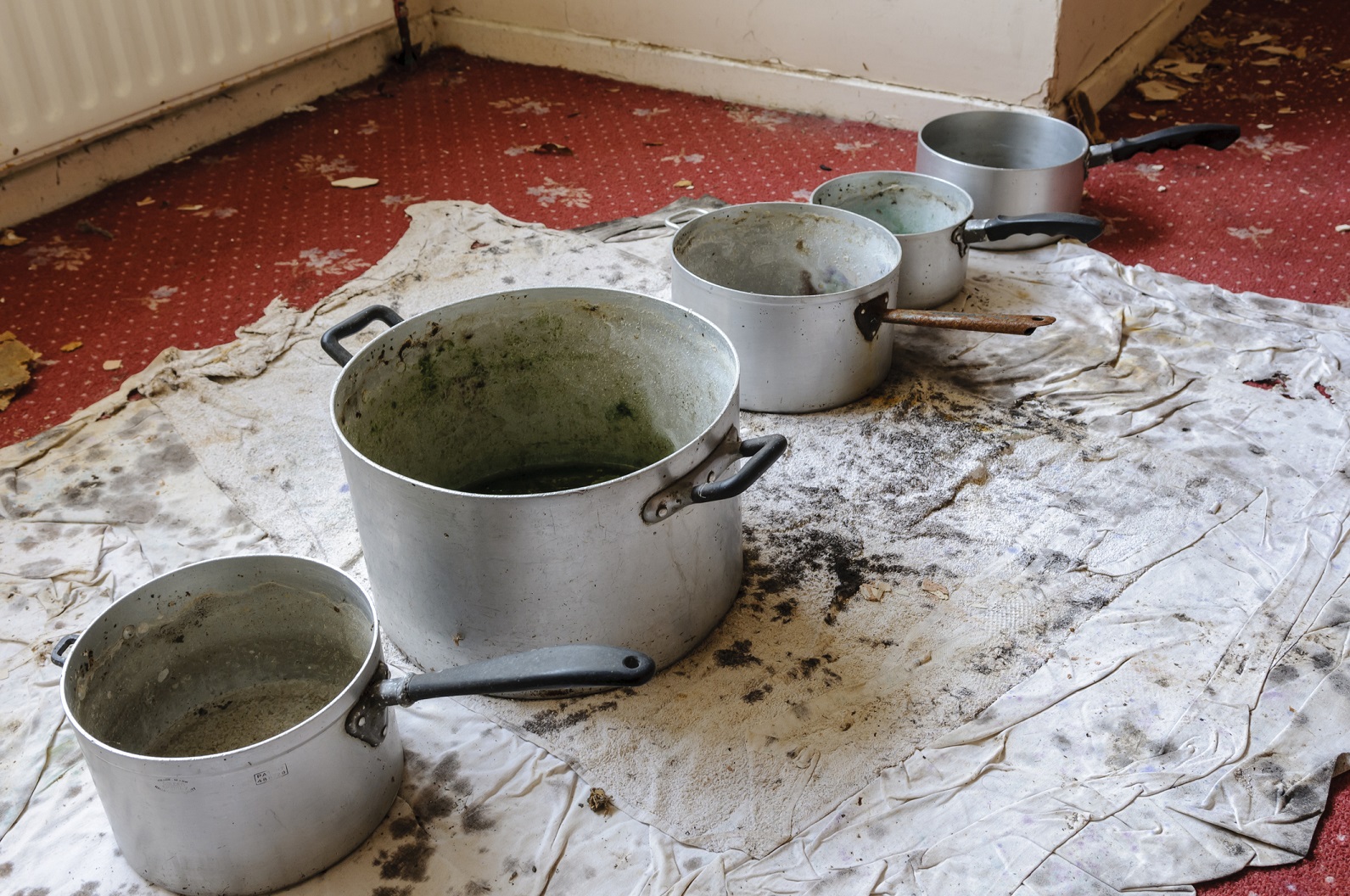Drip.
Drip.
Drip.
If you’ve ever woken up to that sound at three o’clock in the morning, you know the sinking feeling you get when you find out your roof is leaking. Perhaps you have an old roof that needs some TLC, or maybe your roofing contractor made a mistake during the installation. Whatever your situation, you need to perform damage control, get your roof fixed and file a claim with your homeowner’s insurance as soon as possible.
To learn more from your insurance agency in Los Angeles, get in touch with Grand Mutual Insurance today!
Emergency Measures for a Leaking Roof
The first thing you need to do is minimize the damage to the interior of your home. Usually, by the time you can see the leak in the ceiling or along a wall, the materials of the building envelope are already saturated. Then the water will find the route of the least resistance to escape — usually a seam or light fixture. If a lot of water is coming in, it may even find multiple escape routes. Use a bucket or other container to collect the water — more if you need them.
Next, go into your attic and locate the leak there. Again, the water will come through at the point of the least resistance — such as a join — and will already have saturated the insulation. Place a bucket underneath the leak. This will ensure that no more water seeps through the attic floor to your ceiling.
As SF Gate points out, it’s advisable to apply an emergency covering to your roof to temporarily stop the leak. You can use a large sheet of sturdy polyethylene plastic or even a tarp. Secure it with four two by fours so it doesn’t blow away. And remember: Always wear shoes with anti-slip soles and make sure someone else is home when you work on your roof!
Getting Your Roof Repaired
Now you’ve got things under control, it’s time to find a roofing contractor to repair your roof. If it’s new, it should still be under warranty, so contact the company that originally installed it and explain that you have a leak. While it’s unlikely that the contractor will be able to repair your roof the same day, he or she should be able to accommodate you within a week.
If you have an older roof, look in the Yellow Pages or on Angie’s List to find reputable roofing contractors in your area. Once you’ve found a handful, read the reviews to see what other people have to say about them. Then call the top three, ask for a quote from each and select the one that best fits your timeline and budget.
Claiming the Damage
To claim any damages on your homeowner’s insurance policy, you have to document the damage. Take photographs of the leak in the ceiling, roof and along any walls, if applicable. Make sure the images are sharp and well lit. If any of your belongings are damaged and need to be repaired or replaced, take photographs of those, too. Then call your insurance company and ask for instructions on when to file the claim. Oftentimes, you’ll be instructed to get the damage repaired and include the invoice plus photos when you submit your claim. However, in some instances, the insurance company will want to send someone to inspect the damage before you have your roof fixed.
A leaking roof is always an unpleasant surprise. But if you act quickly and responsibly, you can minimize the damage to the rest of your home and maximize your chances of being reimbursed by your insurance agency in Los Angeles, Grand Mutual.




